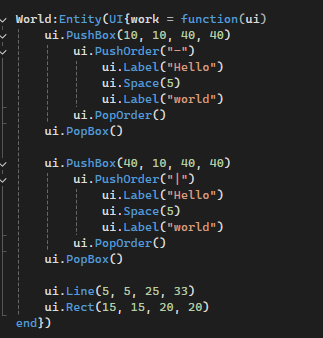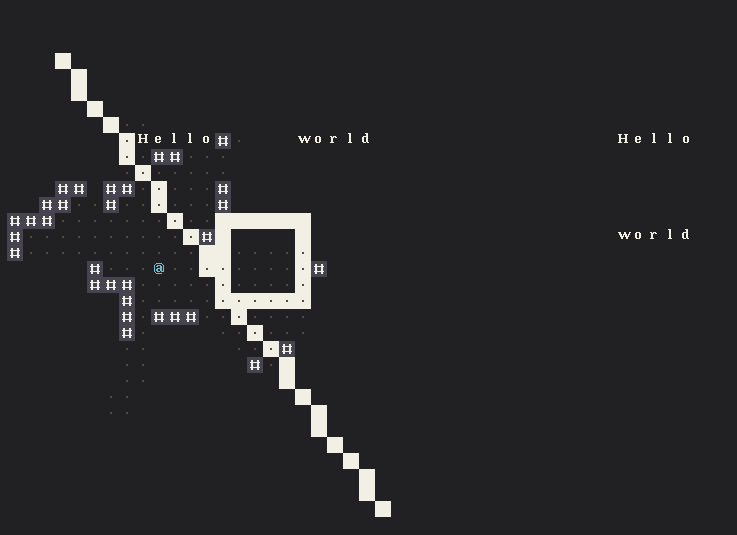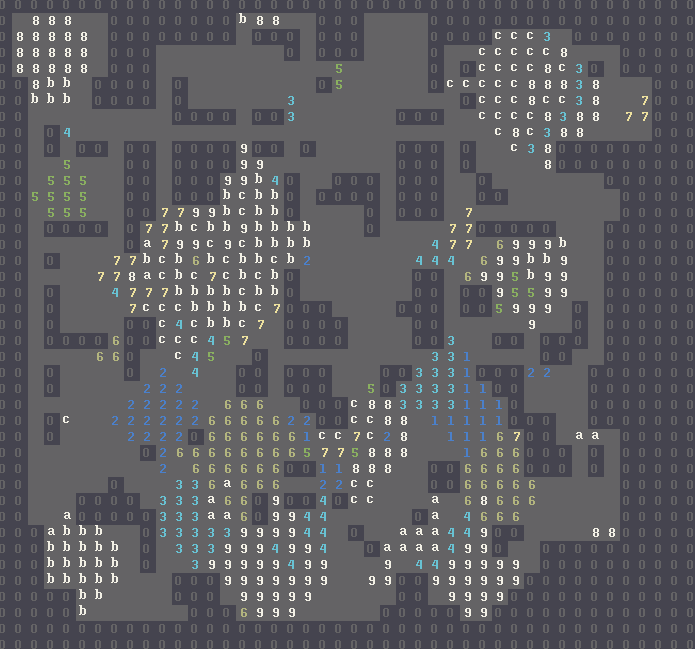The First Two Days
I feel like it's been 16h of continuous work, even though it hasn't! I've been taking long breaks, eating good food, and walking for hours, and yet I felt like a hammer hit me when I saw that today is the 3rd of March (on a technicality).
I've mostly been using this time to make some last minute adjustments to Svarog, which is the library we've been cobbling together for the last few months to get us through the challenge. I didn't get to do any GUI work before, so today was the day for that and I can say I'm quite happy! Here's a very crude example of me testing alignments, as well as what the code produces:


The background game layer is undisturbed by my shenanigans. I've added bars and lists as well, but I think that'll do it for now.
After that, I went back to procgen: we have the general shape of the space down, but there's nothing inside. This game will require some large open spaces, as we plan to use movement as the core of all the more complex mechanics, and try and pull away from the standard "move 1 tile per turn, bump to attack" approach. You can bump, but it most likely won't be for the reasons you'd think. More on that in the coming days.
The procgen has yielded some cool results, even though it's still early - shapes and connectivity, with preparations for content and context. Here's a level that you can now walk:

Doesn't look like much, so let's make it a bit more obvious by switching to a debug view that shows a distance field flooding the space from the player's position:

We can also see the distance every field has from a wall, which helps us with the feng shui of the place:

Most of this level is made out of smaller interconnected rooms (I call them town halls, mostly comprising of 3s and 4s), except for two spots where we go higher. We want to make those spots pop with content, so we pick them out and generate zones:

You can see that zones align themselves well with the layout of the rooms/walls above. They also fall a bit into each other. We do this so that it wouldn't feel unnaturally stiff once generation of content happens. If the c zone is storage, for example, you'll see a lot of crates and chests down below where the bulk of it is, but you also might get some further away, or find a key spawned in one of the other c spaces that unlocks something below.
There are 12 zones, and the counter circles back to 1 after having counted to the 12th. In this way, the zones form a kind of circle of intent: the intent of a zone is similar to another if there close by, or if they're within some specific ratios of each other. This correspondence is directly tied to our magic system, about which– well... read and find out!
One more thing we currently do is use the zone positions to pick a good spot for the staircases: stairs are going to be in quiet places - places as far away from the central zones as possible. This doesn't mean that they're out of reach, however, check it out: in the following level...

...if we make a distance map from the zone centers...

It yields some cool spaces! There's additional constraints that stop staircases appearing on corridors, leaving two spaces fit for stairs. Had that not worked out, we just continue with distance 8 and so on until it works. The closer we are, the more tension builds and the more fields of that number there are, so probability works in our favor! Can't wait to work on content machines tomorrow and see what Stefan is cooking!
Subscribe for more!